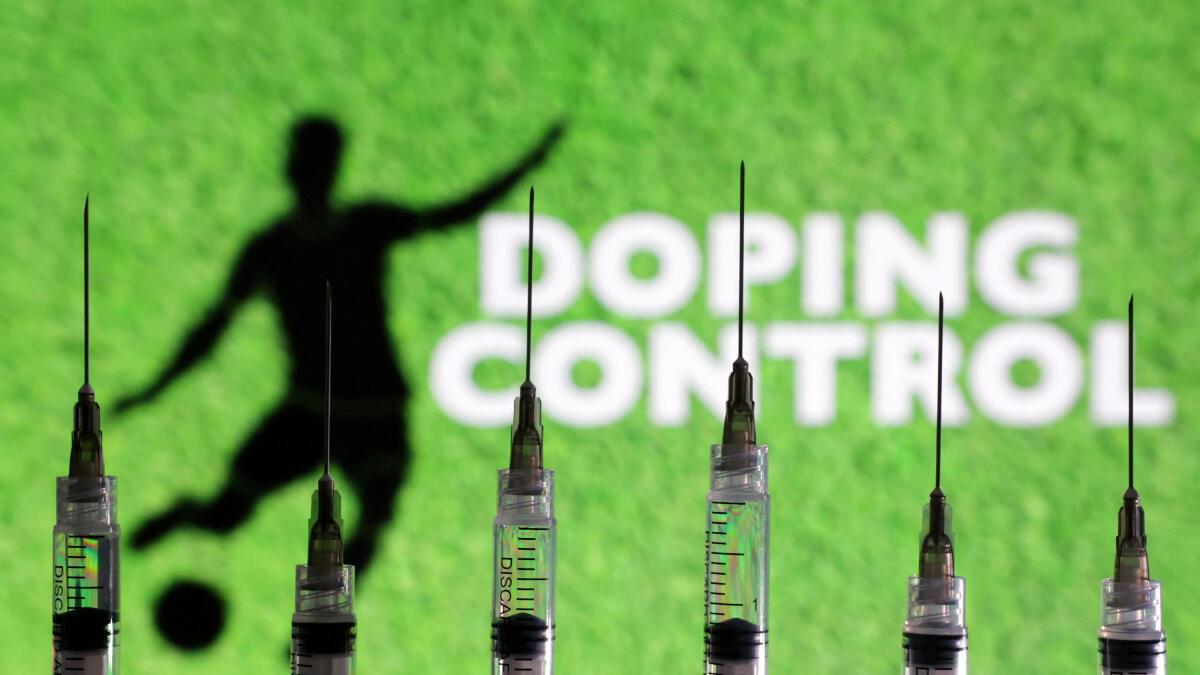India tops doping charts with 213 positive cases in 2023
The National Anti-Doping Agency (NADA) has topped the world-wide charts for number of adverse analytical findings (AAFs) with 213 positive cases for the year 2023.
The 2023 figures were published by the World Anti-Doping Agency on Thursday (June 19). With a record number of 5,606 samples, it was no surprise that NADA led the doping charts for the year.
The only time NADA crossed this figure of 213 positive cases was in 2019 when it had 224 cases from 4,004 samples at 5.6 per cent. This time, the percentage of positive cases from the number of samples submitted by NADA was 3.8, the highest for any national anti-doping organization that tested more than 1,000 samples for the year.
The National Dope Testing Laboratory (NDTL) returned a total of 214 AAFs from 5,889 samples (urine and blood). The total samples swelled to 6,077 when the 188 Athlete Biological Passport (AB) samples were added.
Athletics, as in most years in the past, topped the Indian violations with 60, comprising 47 from in-competition tests and 13 from out of competition tests.
It has become almost routine for athletics in India to lead the doping charts. It may be noted, over the years the number of samples in athletics has also grown, with 2023 producing 1,106 samples, out of which 567 were taken in-competition.
Weightlifting, which used to take turns with athletics at the top in Indian testing figures, had 38 positive cases in 2023, when 26 lifters were declared positive in in-competition tests. Overall, weightlifting cases came from 451 samples with a high percentage of 8.4.
Other major contributors to the Indian tally for the year were: Powerlifting 28, wrestling 10, judo 6, cycling 5, para-athletics 5 and bodybuilding 5 (from 7 samples at a whopping 71 per cent).
NDTL analysed 471 samples that came from outside India and also handled 188 blood samples during the year.
Among the neighbouring countries, the Pakistan anti-doping organization did 53 samples and turned in nine positive cases at 17 per cent while Sri Lanka conducted tests on 120 samples, getting five positive cases at 4.2 per cent.
At the world level, Cologne, Germany, did 28,940 samples to India’s total of 5,889 samples from in-competition and out-of-competition tests. The Indian lab also received 477 blood samples out of which two came positive.
India’s recent record showed the highest numbers in 2019 at 224 positive cases, while it was 55 in 2020 from 1,886 samples, 42 from 1,794 samples in 2021 and 124 from 3,865 in 2022. India tested 5,162 samples in 2015, its highest number till now since NADA came into existence in 2009.
WADA said in overall terms of samples there was an increase of 12.5 per cent from the previous year. Adverse analytical findings increased from 0.77 per cent to 0.80 per cent. Comparing figures from 2012, WADA noted that AAFs had reduced from 3.35 per cent in 2012 to 1.88 in 2023. A total of 2,88,865 samples were analysed by accredited laboratories in 2023.
It may be noted that AAFs do not mean doping practices. They are only positive cases reported by a laboratory. Eventually, the medical background of an athlete, investigation documents, history of illness, supplements consumption, other inadvertent consumption of banned substances etc. will determine a doping offence to be decided by a hearing panel.
The number of Anti-Doping Rule Violations (ADRVs) will tell us about a country’s standing in the doping sphere. In India’s case, a high rate of conversion from AAFs to ADRVs indicate that a large majority of the AAFs in any year may end up in sanctions.


